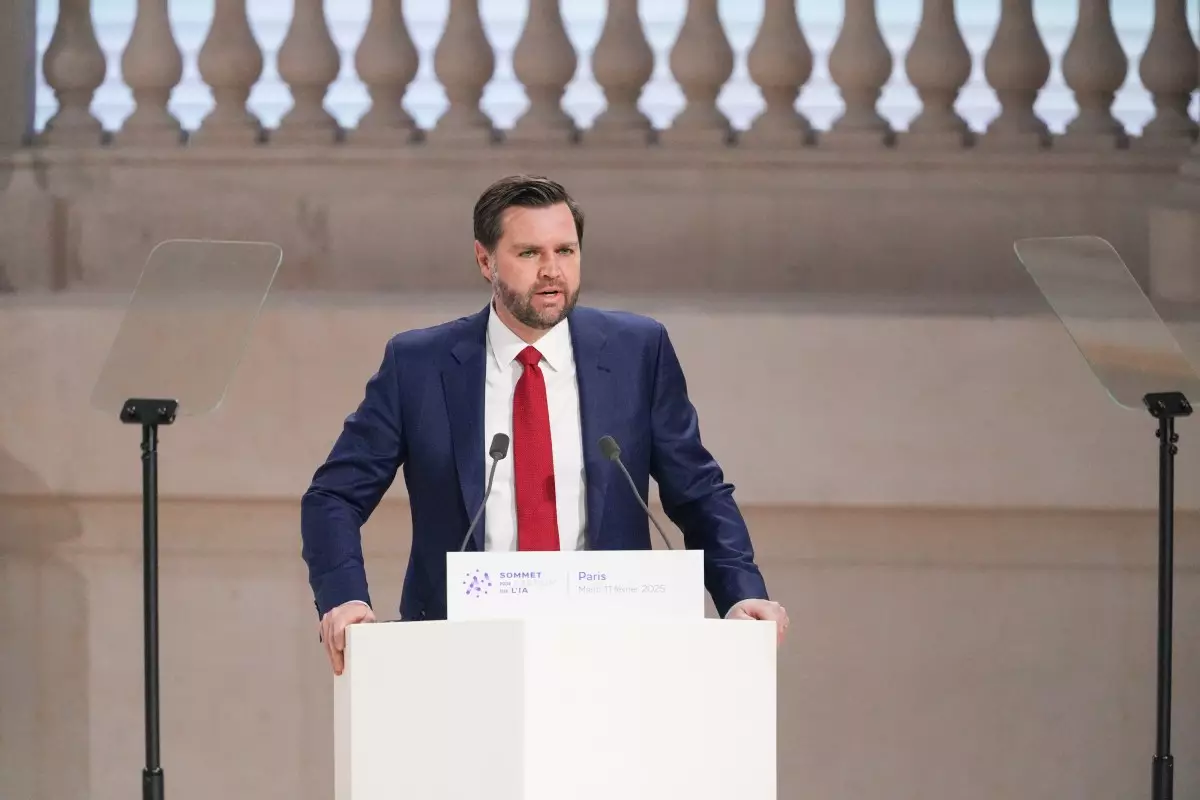Amidst the rapid ascent of artificial intelligence (AI) as a pivotal force in global innovation, the recent AI Action Summit in Paris has spotlighted a stark divide between perspectives on regulation and opportunity. The U.S. delegation, personified by Vice President J.D. Vance, took an outspoken stance against conventional safety narratives, spotlighting an eagerness to prioritize competitive advantage over regulatory caution. As we delve into Vance’s address, it becomes crucial to analyze the implications of a regulatory landscape that favors unbridled innovation at potential societal costs.
In an era marked by heightened global scrutiny over the implications of AI, Vice President Vance’s speech emerged as a clarion call for American supremacy in the technological sphere. He heralded the intent to craft an AI action plan that eschews stringent regulations in favor of a pro-growth environment. By inviting other nations to adopt a similar approach, Vance seemingly downplayed existing frameworks—particularly in the European Union—focused on safeguarding democratic values against the potential tyrannies of unchecked technology.
His declarations that the U.S. will prioritize its AI technologies as “the gold standard” starkly contrast with the prevailing narrative in digital governance, where transparency and safety are increasingly prioritized. These comments not only highlight a philosophical rift but also raise essential questions: What sacrifices are being made at the altar of innovation? In championing progress, have we inadvertently overlooked the societal obligations that accompany transformative technologies?
Vance’s rhetoric signals a paradigm shift in discussions surrounding AI. Moving from an overwhelming emphasis on safety to one highlighting opportunity, he aims to recalibrate the conversation. “AI opportunity” became a recurring theme, suggesting an intentional departure from a cautionary discourse that previously sought to address potential hazards associated with rapid technological change.
Yet, this optimistic perspective begs scrutiny. While it is undoubtedly essential to harness AI’s transformative potential, equating regulation with hindrance overlooks the foundational role that ethical considerations and safety standards play in ensuring public trust. A complete disregard for risk fosters an environment where both innovation and the public’s well-being could be jeopardized, potentially leading to a backlash against technology-led initiatives.
A pivotal concern for many stakeholders in AI discourse centers around its ramifications for the labor market. Vance’s assertion that the “Trump administration will maintain a pro-worker growth path for AI” reflects an awareness of this issue. However, this optimistic outlook clashes with numerous industry reports indicating that automation and AI technologies have resulted in significant job displacement, particularly within lower-skilled labor sectors.
The hopeful narrative shared by Vance requires a more robust framework addressing the specific means through which AI will contribute to job creation amid such disruptions. Without concrete strategies for reskilling and reintegrating displaced workers, the risk of exacerbating inequality remains high. In this regard, promoting AI as a panacea for employment while ignoring its adverse effects raises critical ethical questions regarding policy development.
In juxtaposition to Vance’s sentiments, European leaders, particularly EU President Ursula von der Leyen, have reiterated the necessity of coherent, collective approaches to AI safety. Emphasizing the importance of generating a single set of regulations to govern a population of 450 million, her position advocates for a measured balance between innovation and public safety. The European perspective encapsulates a commitment to achieving a robust regulatory framework that safeguards citizens from the perils of unfettered technological advancement.
This divergence in philosophy points toward an overarching struggle between two visibilities of progress: the U.S. model that champions deregulation as a pathway to supremacy, and the EU approach that sees regulation as a means to foster trust and collaboration with the populace. Bridging this gap necessitates dialogue, respect, and an understanding of the distinct cultural and technological landscapes at play.
As discussed in Vance’s speech, the future trajectory of AI governance will undoubtedly require careful deliberation between fostering innovation and ensuring safety. The failure to reconcile these aspirations may lead to fractious debates centering on who benefits from AI advancements and the prices borne by society at large.
In navigating this complex landscape, the imperative remains clear: stakeholders must prioritize collaborative approaches that embrace proactive regulation. Such efforts can provide a robust framework for safely deploying AI technologies while ensuring equitable access and protections for all citizens. The evolution of AI cannot be solely defined by economic imperatives; it must also reflect society’s values and ethical considerations moving forward.

